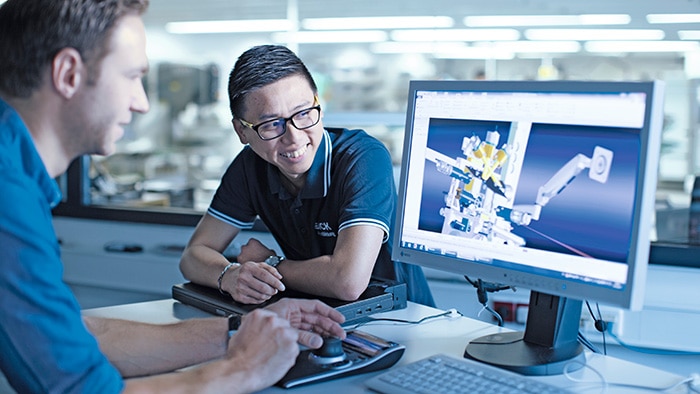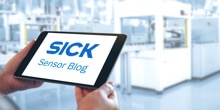When we all speak the same language, lots of things become a whole lot easier. But communication isn’t just important between humans. Communication between human and machine, robot and machine control, and application and cloud is just as vital. In robotics, the open source robot management software ROS is the perfect universal language for meeting these challenges. The software can be used to program applications and control robots, while the language itself is shared and developed by experts all over the world. Two partners who use ROS language — and who are collaborating more and more closely as a result — are SICK and the Linz-based automation company KEBA.
Robot Operating System (ROS) with SICK and KEBA: Diversity and simplification
A single language for the world of robotics
The future of robotics speaks with one voice
New fields for robotics – ROS is big news in the agricultural industry too
Access to new generations is one thing. But ROS is also paving the way for completely new applications. The new flexibility of the cobot is increasingly permeating areas where previously such extensive use of robots would have been unthinkable. According to Barth, ROS will have an impact even on “those processes that don’t need to run in real time and that mostly rely on sensors and cameras.” These include agricultural applications such as sowing, weed removal, or harvesting, as well as additional shifts for processes that no longer need to be done by humans and require manual reworking at most. The new mobile cobots, especially those mounted on automated guided vehicle systems, are conquering new spheres of operation around the clock, in all areas of industrial automation.
Shared visions
The sense of optimism is everywhere. And it’s no less palpable in the words of Alexander Barth, who points out: “In contrast to the view 10 years ago, we can now build robots for ourselves again.” Systems that were still prohibitively expensive just 10 years ago can today be brought online much more cheaply thanks to the community. In these fields, the trend is moving away from manufacturer-specific systems towards an open approach. Josef Zimmermann, SICK’s Technical Industry Manager for Robotics, adds: “It makes sense to work with standardized software interfaces—and across a huge bandwidth, from AGCs to six-axis robots.”
Read more:
Part localizer from SICK brings order to the chaos of mixed-up parts
High speed camera from SICK verifies components in the KUKA SmartProduction Center
Making hard things easy - A safety solution for a mobile heavy-load robot
Smart Motor Sensors from SICK are ensuring HIWIN robots are safe and fit for the future
Cobots Claus and Clara: collaborative robotics with a SICK safety
Sensor solutions for Robotics:
Working together as equals
Thanks to sensors from SICK, robots perceive more precisely. For all challenges in the field of robotics: Robot Vision, Safe Robotics, End-of-Arm Tooling, and Position Feedback.
Learn more




